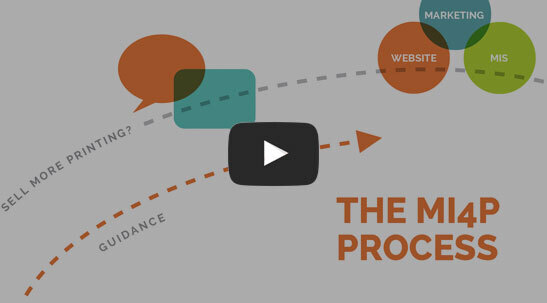Here’s How You Eat An Elephant

You’ve started your next big project. It’s the big idea that will leapfrog you past other printers competing with you. It’s the revolutionary change that will usher in your next period of success. And it’s intimidating. You’ve lost your momentum, and you’re stuck.
The mighty elephant in the room is your obstacle. It’s easy to see, but at the same time you don’t know how to get past it, so it seems even easier just to ignore.
You can beat the elephant! How? You beat an elephant the same way you eat an elephant: one bite at a time.
We’ve Been There
Our “next big project” is our Print MIS called Odyssey. Building a new Print MIS from the ground up is challenging. It would be nice if we could say that we perfectly executed a plan that took us from concept to launch with no surprises. The truth is much different, of course. There were days we’d have a stare-down with Odyssey as we tried to figure out how to move past the elephant in the room.
If you’re stuck on your project, borrow some ideas from us. Here are three ideas the team at Marketing Ideas For Printers uses to chew on that way-too-big elephant.
Idea 1: Establish Checkpoints
Sometimes the elephant wins just by sheer size. The bigger the project, the bigger the elephant/obstacle. It’s usually pretty easy to plot a course for a few days or weeks into the future. Even seeing where you want to be within a few months is often within reach. But what if your “eat the elephant” end date is a year into the future? Two years? Five years?
How you win:
Nail down your end-date and put checkpoints in place at regular intervals between now and then. Lay out goals for specific days each quarter, and then divide your current quarter into weekly check-ins to make sure you see regular progress. If your elephant is way too big, just slice it up into bite-sized pieces.
The key to making this idea work is to make sure you trust your checkpoints. If you do, then you can forget about everything beyond the next checkpoint and focus all your energy exclusively on doing what needs to be done to get to the checkpoint you’re working on now. And don’t forget, no plan is 100% perfect. You may arrive at a checkpoint and find that the path to reach your goal needs to change. Adjust the remaining checkpoints to reflect that new reality and continue to the next checkpoint.
Idea 2: Force Yourself to Chew Smaller Bites
Even if you establish quarterly checkpoints and weekly check-ins as suggested above, you may find that your eyes were bigger than your stomach. You try to start eating that elephant one bite at a time, but that first bite is just way too much. The elephant wins because you stop eating when you’re stuck.

How you win:
Take a look at your next goal and ask yourself, “How can I make this simpler? How can I break this up into smaller, more manageable tasks?” Break up your next goal into several micro-tasks that can be accomplished within four hours. It doesn’t matter how many micro-tasks you create out of that one goal. The important part is that you’re reducing one goal down to a series of smaller tasks, each of which can be achieved within four hours. That exercise brings a level of clarity that makes it easy to see the next step.
Idea 3: Bring in Help!
If you look at the number of four-hour tasks you created in the previous idea, you might be facing a newly-discovered reality. You may have learned that there are way too many four-hour tasks for you to fit into your schedule. The elephant convinces you that there’s just too much to do, and there’s no way you can accomplish this on your own. In this case, the elephant might be right.

How you win:
Fight that elephant! Sometimes you just can’t do it on your own and need to bring in help. An excellent benefit of Idea 2 is that if you bring enough clarity to each four-hour task, each four-hour task should be clear enough that others on your team can help with just a little assistance from you. Better yet, if your budget allows, you or your team can use the clearly defined four-hour projects to bring in people from outside your organization to help.
This idea really works! We use defined, well-documented micro-projects to invite coders to help us rapidly develop Odyssey.
What advice can you offer on how to get past those big, sticky obstacles? How do you chew your elephants? Share your ideas in the comments below.


